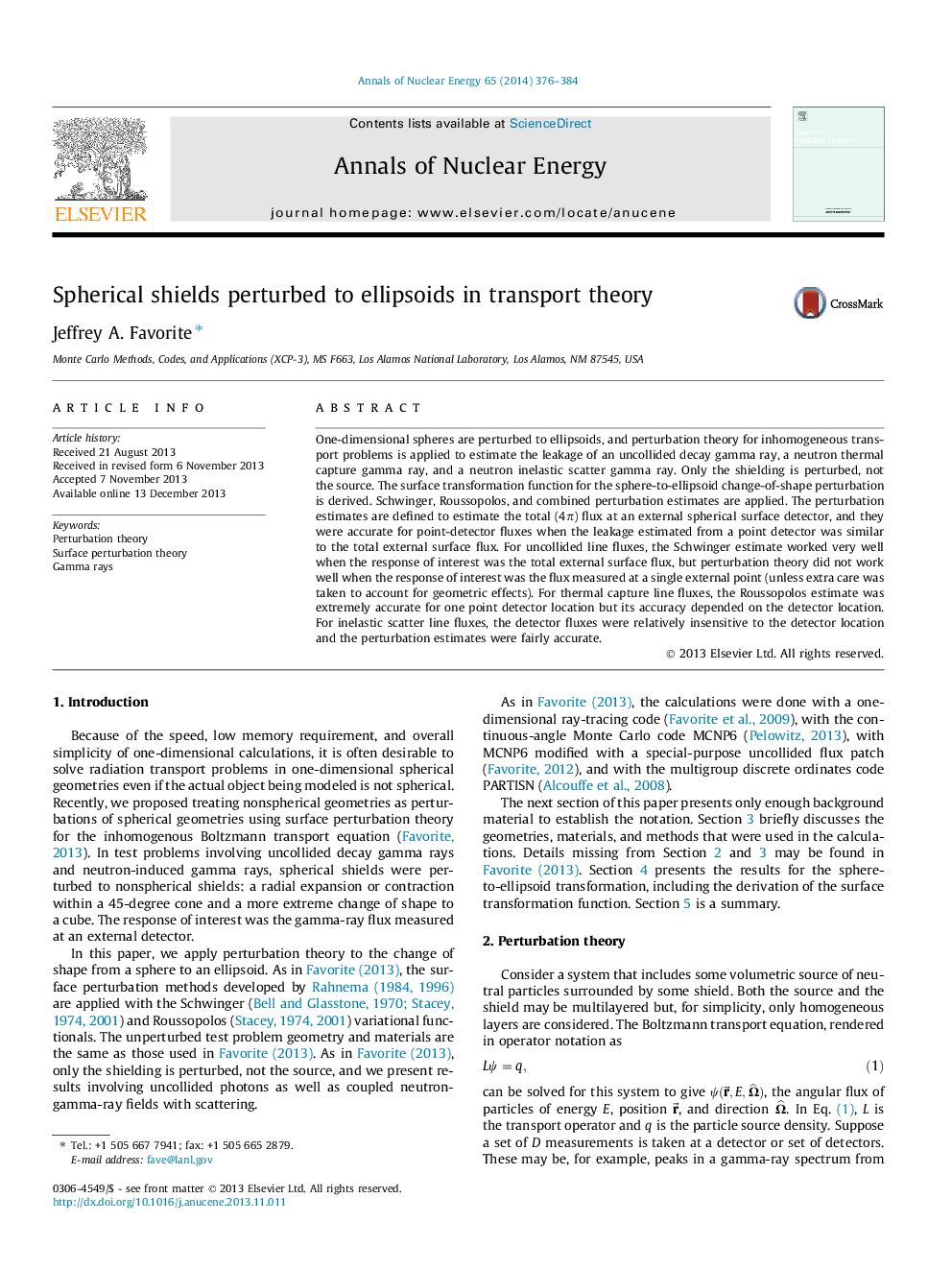| Article ID | Journal | Published Year | Pages | File Type |
|---|---|---|---|---|
| 1728441 | Annals of Nuclear Energy | 2014 | 9 Pages |
•Surface perturbation theory is used to transform a spherical radiation shield to an ellipsoid.•The surface transformation function is derived.•The accuracy of perturbation estimates depends on the detector location and problem physics.
One-dimensional spheres are perturbed to ellipsoids, and perturbation theory for inhomogeneous transport problems is applied to estimate the leakage of an uncollided decay gamma ray, a neutron thermal capture gamma ray, and a neutron inelastic scatter gamma ray. Only the shielding is perturbed, not the source. The surface transformation function for the sphere-to-ellipsoid change-of-shape perturbation is derived. Schwinger, Roussopolos, and combined perturbation estimates are applied. The perturbation estimates are defined to estimate the total (4π) flux at an external spherical surface detector, and they were accurate for point-detector fluxes when the leakage estimated from a point detector was similar to the total external surface flux. For uncollided line fluxes, the Schwinger estimate worked very well when the response of interest was the total external surface flux, but perturbation theory did not work well when the response of interest was the flux measured at a single external point (unless extra care was taken to account for geometric effects). For thermal capture line fluxes, the Roussopolos estimate was extremely accurate for one point detector location but its accuracy depended on the detector location. For inelastic scatter line fluxes, the detector fluxes were relatively insensitive to the detector location and the perturbation estimates were fairly accurate.
